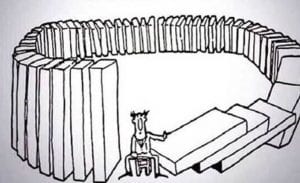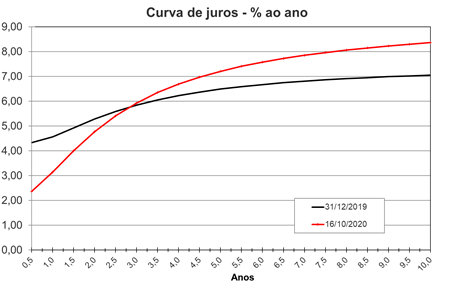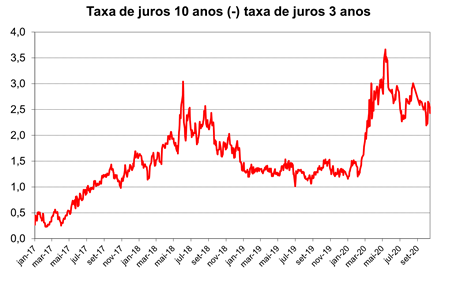Um importante estudo de história econômica que desmonta parcialmente aquelas teses "bonitas", mas carentes de comprovação empírica, sobre a não industrialização do Brasil, no século XIX, por causa dos tratados desiguais, da "tarifa inglesa" ou por falta de protecionismo adequado, por parte de um dos melhores historiadores econômicos da atualidade.
Paulo Roberto de Almeida
Tariffs and the Textile Trade between Brazil and Britain (1808-1860)
Thales A. Zamberlan Pereira
FGV – EESP
thales.pereira@fgv.br
draft: October 2020
Abstract
The commercial treaty with Britain in 1810, along the authorization of foreign trade in ports in 1808, are among the most important institutional changes in nineteenth century Brazil. The 1810 treaty lowered tariffs for British manufactures while maintaining high tariffs in Britain for Brazilian sugar and coffee. These terms are generally viewed as disastrous for the Brazilian economy, although there is still limited quantitative information about how much the tariff affected the demand for British imports. This paper provides new qualitative and quantitative evidence on the operation and effect of Brazil’s imports tariffs in the period. I find that the effect of the tariffs is significantly different from what traditional literature assumes. First, the monetary instability in the 1820s and conflicts over product price assessment often led the de facto tariff to be higher than the 15% es-tablished by the treaty. Second, even with higher rates, quantitative analysis shows they did not have decrease imports of British textiles.
Acesso:
https://www.dropbox.com/s/knzwi7npvreliz3/Pereira%20-%20Brazil%20Import%20Tariffs%20revisado.pdf?dl=0
1. Introduction
In 1843, during the final days of the commercial treaty initiated in 1810, an article in the first issue of the newspaper The Economist criticized the preferential treatment given to Britain in exchange for a “liberal” commercial policy from Brazil. Brazil’s main export products paid significantly higher duties compared to the British colonies. Sugar paid duties 150 percent higher and coffee 100 percent higher (The Economist 1843, 4). [The Economist. 1843. “Expiring Commercial Treaty with the Brazils,” September 2, 1843, 1 edition. www.economist.com/node/2002191] Only cotton had a moderate tariff, being similar to the imposed on the United States. The commercial treaty of 1810, which was initially an agreement with Portugal, continued after Brazil’s independence in 1822. Brazilian officials renewed the treaty in 1827. British imports had an official nominal tariff rate of 15 percent between 1810 and 1843, which is considered a low tariff compared to other countries Brazil traded with at the time. Thus, even the British foreign secretary George Canning argued, in 1826, that the commercial treaty was advantageous to Britain and “more onerous to Brazil.”
The obvious imbalance of privileges between Brazil and Britain has led the 1810 treaty to be largely condemned by Brazilian historiography (Manchester 1964, 92; Prado Jr. 1972; Pantaleão 2003, 95; Wilcken 2005, 155). Historians such as Alan Manchester, among others, characterized the lower tariff for British manufactures as a “permanent” source of commercial losses to Brazil (Ricupero 2007, 46). Moreover, the sudden increase in the imports of British textiles during the 1810s led to the view that the treaties prevented the development of local manufactures, blocking Brazil’s path to modern economic growth (Luz 1975, 23; Pryor 1965, 99). Stanley Stein argued that the beginning of the textile industry in Brazil was only possible due to the higher import tariffs after 1844 (Stein 1979, 28). Despite not blaming the commercial treaties for Brazil’s failure to industrialize, Celso Furtado argued that a 15 percent tariff “limited the autonomy of the Brazilian government in the economic sector” (Furtado 2006, 71, 143–44).
Even though there is a longstanding view on the negative consequences of the commercial treaties, there is still limited quantitative information on how tariffs affected Brazilian imports (especially textiles) during the first half of the nineteenth century. The main source of foreign trade in Brazil during the nineteenth century – government statistical yearbooks – provides only aggregate data after 1821. There are no statistics for different countries and products before the 1840s (IBGE 1939; Lago 1982). Even critics of the view that Brazil was an “informal British colony,” such as Stephen Haber and Herbert Klein, based their arguments on the same official sources (Haber and Klein 1997). Some studies that use British sources, on the other hand, do not correct for the well-known problem of outdated prices in the ledgers of imports and exports and overestimate the trade imbalance between Britain and Brazil (Arruda 2008; Imlah 1948).
By using archival evidence from the British Foreign Office, the Board of Trade, and price information from newspapers, this paper provides new information about how tariffs worked in Brazil after 1810 and discusses how imports of cotton textiles responded to changes in taxation. It extends the work of Arthur Pryor (1965) on the evolution of Brazil’s tariff policy, providing evi-dence that the effective tariff rate in Brazil was sometimes higher than that established by the trade treaties with Britain. The higher average tariff occurred in two ways. First, the Brazilian govern-ment sometimes attempted to increase revenue by overvaluing British products at customhouses, which increased the de facto tariff rate. The government overvalued British products by taxing imported products at official prices from a book of rates, which was called pauta. The use of official values for assessing imports is known in the literature, but it has been largely ignored in the debate over the effects of trade treaties (Lima 1908, 399). Second, that the tariff departed from the 15% established by the treaty because of monetary instability that occurred during the late 1820s. As prices on the book of rates were not often adjusted, sudden changes in the exchange rate had a significant impact on the average tariff level.
(...)
Go to the link...
References.
Alden, Dauril. 1987. “Late Colonial Brazil, 1750-1808.” In Colonial Brazil, edited by Leslie Bethell, 284–343. Cambridge ; New York: Cambridge University Press.
Alexandre, Valentim. 2007. “A Carta Régia de 1808 e Os Tratados de 1810.” In A Abertura Dos Portos, edited by Luís Valente de Oliveira and Rubens Ricupero, 100–121. São Paulo: Senac.
Arruda, José Jobson de Andrade. 2008. Uma colônia entre dois impérios: a abertura dos portos brasileiros 1800-1808. Cátedra Jaime Cortesão.
Bai, Jushan, and Pierre Perron. 2003. “Computation and Analysis of Multiple Structural Change Models.” Journal of Applied Econometrics 18 (1): 1–22. https://doi.org/10.1002/jae.659.
Bairoch, Paul. 1972. “Free Trade and European Economic Development in the 19th Century.” European Economic Review 3 (3): 211–45. https://doi.org/10.1016/0014-2921(72)90005-0.
Baldwin, Richard. 2016. The Great Convergence. Harvard University Press.
Batista Jr, Paulo Nogueira. 1980. “Política Tarifária Britânica e Evolução Das Exportações Brasileiras Na Primeira Metade Do Século XIX.” Revista Brasileira de Economia 34 (2): 203–40.
Bethell, Leslie. 1970. The Abolition of the Brazilian Slave Trade: Britain, Brazil and the Slave Trade Question. Cambridge: Cambridge University Press.
Boianovsky, Mauro. 2013. “Friedrich List and the Economic Fate of Tropical Countries.” History of Political Economy 45 (4): 647–91. https://doi.org/10.1215/00182702-2369958.
Brasil. 1830. Pauta D’Alfandega Do Rio de Janeiro. Rio de Janeiro: Typographia Imperial de Plancher Seignot.
Buescu, Mircea. 1979. Brasil, disparidades de renda no passado: subsídios para o estudo dos problemas brasileiros. Rio de Janeiro: APEC.
Bulmer-Thomas, Victor. 2003. The Economic History of Latin America since Independence. 2 edition. Cambridge, U.K. ; New York: Cambridge University Press.
Cardoso, José Luís. 2008. “A abertura dos portos do Brasil em 1808: dos factos à doutrina.” Ler História, no. 54: 9–31. https://doi.org/10.4000/lerhistoria.2342.
Christelow, Allan. 1947. “Great Britain and the Trades from Cadiz and Lisbon to Spanish America and Brazil, 1759-1783.” The Hispanic American Historical Review 27 (1): 2–29. https://doi.org/10.2307/2508589.
Coatsworth, John H., and Jeffrey G. Williamson. 2004. “Always Protectionist? Latin American Tariffs from Independence to Great Depression.” Journal of Latin American Studies 36 (2): 205–32. https://doi.org/10.1017/S0022216X04007412.
Collier, Simon, and William F. Sater. 2004. A History of Chile, 1808-2002. Cambridge: Cam-bridge University Press.
Costeloe, Michael P. 1981. “Spain and the Latin American Wars of Independence: The Free Trade Controversy, 1810-1820.” The Hispanic American Historical Review 61 (2): 209–34. https://doi.org/10.2307/2513829.
Crucini, Mario J. 1994. “Sources of Variation in Real Tariff Rates: The United States, 1900-1940.” The American Economic Review 84 (3): 732–43.
Davis, Ralph. 1979. The Industrial Revolution and British Overseas Trade. Leicester University Press.
Esteban, Javier Cuenca. 1995. “Further Evidence of Falling Prices of Cotton Cloth, 1768-1816.” The Economic History Review 48 (1): 145–50. https://doi.org/10.2307/2597875.
———. 1999. “Factory Costs, Market Prices, and Indian Calicos: Cotton Textile Prices Revis-ited, 1779-1831.” The Economic History Review 52 (4): 749–55.
Farnie, D. A. 1979. The English Cotton Industry and the World Market: 1815-1896. Oxford Uni-versity Press.
Fisher, John. 1981. “Imperial ‘Free Trade’ and the Hispanic Economy, 1778–1796.” Journal of Latin American Studies 13 (1): 21–56. https://doi.org/10.1017/S0022216X00006155.
Fishlow, Albert. 1980. “Brazilian Development in Long-Term Perspective.” The American Economic Review 70 (2): 102–8.
Fontoura, João Carneiro da. 1923. Documentação Para o Historico Das Tarifas Aduaneiras No Brasil 1808-1889. Rio de Janeiro: J. Leite.
Furtado, Celso. 2006. Formação econômica do Brasil. Companhia das Letras.
Galvarriato, Aurora Gómez. 2008. “The Mexican Cotton Textile Industry: An Overview.” 438. Documentos de Trabajo Des CIDE. Ciudad de México: CIDE.
Goebel, Dorothy Burne. 1938. “British Trade to the Spanish Colonies, 1796-1823.” The Ameri-can Historical Review 43 (2): 288–320. https://doi.org/10.2307/1839720.
Haber, Stephen, and Herbert S. Klein. 1997. “The Economic Consequences of Brazilian Inde-pendence.” In How Latin Amrica Fell Behind: Essays on the Economic Histories of Brazil and Mexico, 1800-1914, edited by Stephen H. Haber, 243–59. Stanford: Stanford University Press.
Harley, C. Knick. 1988. “Ocean Freight Rates and Productivity, 1740–1913: The Primacy of Me-chanical Invention Reaffirmed.” The Journal of Economic History 48 (04): 851–876. https://doi.org/10.1017/S0022050700006641.
———. 1992. “The Antebellum American Tariff: Food Exports and Manufacturing.” Explorations in Economic History 29 (4): 375–400. https://doi.org/10.1016/0014-4983(92)90001-D.
———. 1998. “Cotton Textile Prices and the Industrial Revolution.” The Economic History Review 51 (1): 49–83.
———. 1999. “Cotton Textile Prices Revisited: A Response to Cuenca Esteban.” The Economic History Review 52 (4): 756–65. https://doi.org/10.1111/1468-0289.00147.
Henderson, James. 1821. A History of the Brazil. London: Longman.
Hill, Henry. 1964. Uma Visão Do Comércio Do Brasil Em 1808. Salvador: Banco da Bahia.
Hoppit, Julian. 1990. “Counting the Industrial Revolution.” The Economic History Review 43 (2): 173–93. https://doi.org/10.2307/2596785.
Horace Say. 1839. Histoire des relations commerciales entre la France et le Brésil, considérations genérales sur les monnaies, les changes, les banques et le commerce extérieur par Horace Say. Paris: Editeur du dictionnaire du commerce et des marchandises.
Hunt’s Merchants’ Magazine and Commercial Review. 1848. “Commerce and Navigation of Brazil,” 1848, 19 edition. Hathi Trust Digital Library.
IBGE. 1939. Anuário Estatístico Do Brasil 1939-40. Vol. Ano V. Instituto Brasileiro de Geogra-fia e Estatística.
Imlah, Albert H. 1948. “Real Values in British Foreign Trade, 1798–1853.” The Journal of Economic History 8 (02): 133–152. https://doi.org/10.1017/S0022050700069473.
Irwin, Douglas A. 2017. Clashing over Commerce: A History of US Trade Policy. University of Chicago Press.
James, Gareth, Daniela Witten, Trevor Hastie, and Robert Tibshirani. 2013. An Introduction to Statistical Learning: With Applications in R. New York: Springer Science & Business Media.
Kelly, Morgan, and Cormac Ó Gráda. 2018. “Speed under Sail during the Early Industrial Revolution.” DP12576. CEPR Discussion Paper.
Lago, Luiz Aranha Correa do. 1982. “Balança Comercial, Balanço de Pagamentos e Meio Circulante No Brasil No Segundo Império: Uma Nota Para Uma Revisão.” Revista Brasileira de Economia 36 (4): 489–508.
Levy, Bárbara Maria, and Ana Maria Ribeiro de Andrade. 1985. “Fundamentos do Sistema Bancário No Brasil: 1834-1860.” Estudos Econômicos (São Paulo) 15 (especial): 17–48.
Libby, Douglas Cole. 1991. “Proto-Industrialisation in a Slave Society: The Case of Minas Gerais.” Journal of Latin American Studies 23 (1): 1–35. https://doi.org/10.1017/S0022216X00013341.
Lind, Michael. 2012. Land of Promise: An Economic History of the United States. 1st edition. New York: Harper.
Lisboa, José da Silva. 1810. “Obervaçoens Sobre a Prosperidade do Estados, Pelos Liberaes Principios Da Nova Legislação Do Brazil.” Correio Braziliense, 1810, V edition. Biblioteca Nacional Digital - Brasil.
Llorca-Jaña, Manuel. 2012. The British Textile Trade in South America in the Nineteenth Century. Cambridge ; New York: Cambridge University Press.
Lobo, Eulalia Maria Lahmeyer, Lucena Barbosa Madureira, Octavio Canavarros, Zakia Feres, and Sonia Gonçalves. 1971. “Evolução Dos Preços e Do Padrão de Vida No Rio de Ja-neiro, 1820-1930 - Resultados Preliminares.” Revista Brasileira de Economia 25 (4): 235–66.
Lugar, Catherine. 1980. “The Merchant Community of Salvador, Bahia, 1780-1830.” Stony Brook: State University of New York at Stony Brook.
Luz, Nícia Villela. 1975. A luta pela industrialização do Brasil. São Paulo: Editora Alfa Omega.
Mamigonian, Beatriz G. 2017. Africanos livres: A abolição do tráfico de escravos no Brasil. São Paulo: Companhia das Letras.
Manchester, Alan Krebs. 1964. British Preeminence in Brazil: Its Rise and Decline : A Study in European Expansion. Octagon Books.
Martínez-Galarraga, Julio, and Marc Prat. 2016. “Wages, Prices, and Technology in Early Catalan Industrialization.” The Economic History Review 69 (2): 548–74. https://doi.org/10.1111/ehr.12127.
Mawe, John. 1821. Travels In The Interior Of Brazil - 2nd Ed. London: Longman, Hurst, Rees, Orme and Brown.
Miller, Rory. 1995. Britain and Latin America in the Nineteenth and Twentieth Centuries. 1 edition. London ; New York: Routledge.
North, Douglass. 1958. “Ocean Freight Rates and Economic Development 1730-1913.” The Journal of Economic History 18 (4): 537–55. https://doi.org/10.1017/S0022050700107739.
Oliveira Lima, Manuel de. 1908. Dom Joao VI no Brazil, 1808-1821. Rio de Janeiro: Typ. do Jornal do commercio.
Pantaleão, Olga. 2003. “A Presença Inglesa.” In História Geral Da Civilização Brasileira, 3:75–114. Tomo II O Brasil Monárquico. Rio de Janeiro: Bertrand Brasil.
Pedreira, Jorge M. 2000. “From Growth to Collapse: Portugal, Brazil, and the Breakdown of the Old Colonial System (1760-1830).” Hispanic American Historical Review 80 (4): 839–64. https://doi.org/10.1215/00182168-80-4-839.
Pedreira, Jorge Miguel Viana. 1994. Estrutura industrial e mercado colonial: Portugal e Brasil (1780-1830). Linda-a-Velha: DIFEL.
Peláez, Carlos Manuel, and Wilson Suzigan. 1981. História monetária do Brasil. Brasília: Editora Universidade de Brasília.
Pereira, Thales A. Zamberlan. 2017. “The Cotton Trade and Brazilian Foreign Commerce during the Industrial Revolution.” São Paulo: Universidade de São Paulo.
Platt, D. C. M. 1971. “Problems in the Interpretation of Foreign Trade Statistics before 1914.” Journal of Latin American Studies 3 (2): 119–30.
———. 1973. Latin America and British Trade, 1806-1914: The Merchant Adventurers. Harper & Row.
Prado Jr., Caio. 1972. História econômica do Brasil. Rio de Janeiro: Editôra Brasiliense.
Pryor, Arthur John. 1965. “Anglo-Brazilian Commercial Relations and the Evolution of Brazilian Tariff Policy, 1822-1850.” Thesis, University of Cambridge. https://www.repository.cam.ac.uk/handle/1810/251035.
Ratton, Diogo. 1821. Reflexões sobre o commercio, sobre as alfandegas, sobre os depositos, e sobre as pautas. Lisboa: Na Imprensa nacional.
Rego, Antônio José de Souza. 1869. Relatorio da 2a Exposição Nacional de 1866. Vol. 2. Rio de Janeiro: Typographia Nacional.
Ricupero, Rubens. 2007. “O problema da Abertura dos Portos.” In A abertura dos portos. São Paulo: Editora Senac São Paulo.
Riello, Giorgio. 2013. Cotton: The Fabric That Made the Modern World. Cambridge University Press.
Rosenbloom, Joshua L. 2002. “Path Dependence and the Origins of Cotton Textile Manufactur-ing in New England.” Working Paper 9182. National Bureau of Economic Research. https://doi.org/10.3386/w9182.
Simonsen, Roberto. 1967. História Econômica Do Brasil (1500/1820). Rio de Janeiro: Brasiliana.
Socolow, Susan Migden. 1978. Merchants of Buenos Aires 1778-1810: Family and Commerce. Cambridge University Press.
Sousa, José António Soares de. 1970. “Aspectos Do Comércio Do Brasil e de Portugal No Fim Do Século XVIII e Começo Do Século XIX.” Revista Do Instituto Histórico e Geográfico Brasileiro 289: 3–111.
Spix, Johann Baptist von, Hannibal Evans Lloyd, and Karl Friedrich Philipp von Martius. 1824. Travels in Brazil, in the Years 1817-1820. Undertaken by Command of His Majesty the King of Bavaria. Reise in Brasilien.English. London: Longman, Hurst, Rees, Orme, Brown, and Green. http://catalog.hathitrust.org/Record/008649548.
Stein, Stanley J. 1979. Origens e evolução da indústria têxtil no Brasil: 1850-1950. Rio de Janeiro: Editora Campus.
Stemmer, Juan E. Oribe. 1989. “Freight Rates in the Trade between Europe and South America, 1840-1914.” Journal of Latin American Studies 21 (1): 23–59.
Sturz, Johann Jakob. 1837. A Review Financial, Statistical and Commercial of the Empire of Brazil and Its Resources ; Together with a Suggestion of the Expediency and Mode of Admitting Brazilian and Other Foreign Sugars Into Great Britain. London: E. Wilson.
Styles, John. 2016. “Fashion, Textiles and the Origins of Industrial Revolution.” East Asian Journal of British History 5 (March): 161–89.
Temin, Peter. 1988. “Product Quality and Vertical Integration in the Early Cotton Textile Indus-try.” The Journal of Economic History 48 (4): 891–907.
———. 1997. “Two Views of the British Industrial Revolution.” The Journal of Economic His-tory 57 (1): 63–82.
Tena-Junguito, Antonio. 2010. “Bairoch Revisited: Tariff Structure and Growth in the Late Nineteenth Century.” European Review of Economic History 14 (1): 111–43. https://doi.org/10.1017/S1361491609990062.
The Economist. 1843. “Expiring Commercial Treaty with the Brazils,” September 2, 1843, 1 edition. www.economist.com/node/2002191.
Tibshirani, Robert, Guenther Walther, and Trevor Hastie. 2001. “Estimating the Number of Clusters in a Data Set via the Gap Statistic.” Journal of the Royal Statistical Society: Se-ries B (Statistical Methodology) 63 (2): 411–23. https://doi.org/10.1111/1467-9868.00293.
Turner, Benjamin Bannister. 1897. Chronicles of the Bank of England. London: Swan Sonnenschein & Co.
Villela, André. 2005. “Política tarifária no II Reinado: evolução e impactos, 1850-1889.” Nova Economia 15 (1). http://revistas.face.ufmg.br/index.php/novaeconomia/article/view/444.
Walker, Charles F. 1999. Smoldering Ashes: Cuzco and the Creation of Republican Peru, 1780-1840. Durham: Duke University Press.
Ward, Tony. 2004. “The Corn Laws and English Wheat Prices, 1815–1846.” Atlantic Economic Journal 32 (3): 245–55. https://doi.org/10.1007/BF02299442.
Wilcken, Patrick. 2005. Império à deriva: a corte portuguesa no Rio de Janeiro, 1808-1821. Rio de Janeiro: Editora Objetiva.
Williamson, Jeffrey G. 1990. “The Impact of the Corn Laws Just Prior to Repeal.” Explorations in Economic History 27 (2): 123–56. https://doi.org/10.1016/0014-4983(90)90007-L.
Wright, Antônia Fernanda Pacca de Almeida. 1978. Desafio americano à preponderância britânica no Brasil, 1808-1850. São Paulo: Ed. Nacional.





